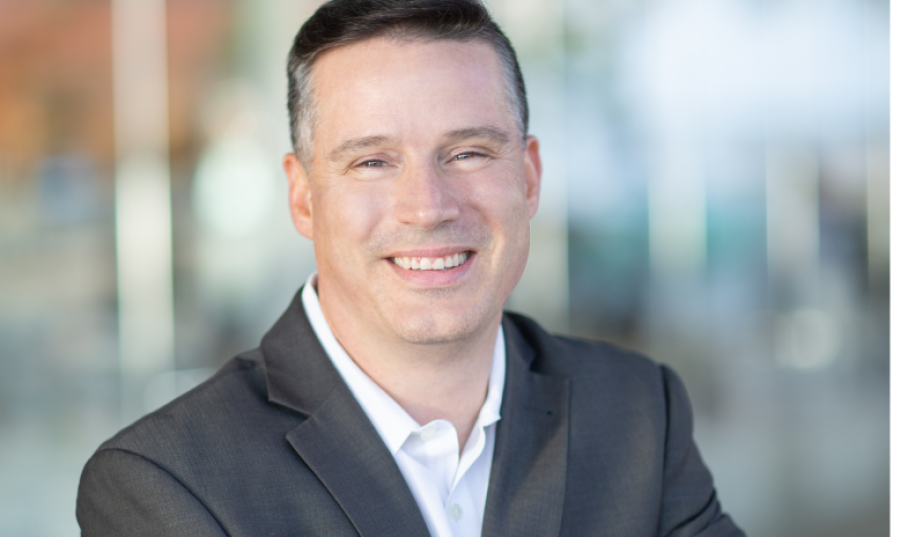
The City of Surrey is a healthtech and life sciences hub. Home to Surrey Memorial, the province’s largest hospital, it’s part of the Fraser Health Authority, BC’s largest healthcare region which serves over two million people. It also boasts a state-of-the-art Health and Technology District that provides both physical space and an infrastructure for partnerships to drive innovation.
In this article, we dive into the opportunities that Surrey can provide to innovators and stakeholders in the healthcare and healthtech industries, and hear from one company that’s taken advantage of all that Surrey has to offer.
HealthTech Connex (HTC): Innovating to Improve Health Outcomes
Since 2013, HealthTech Connex (HTC) has been developing technology-based innovations with the goal of positively impacting health improvements and outcomes. Its three companies, NeuroCatch Inc., The Centre for Neurology Studies, and the Surrey Neuroplasticity Clinic, are all doing groundbreaking work on the science of brain health out of Surrey.
More specifically, HTC’s work is based out of the Health and Technology District, which was developed and built by HTC’s parent company, the Lark Group. The project is designed to foster partnerships in the health and technology sectors by providing resources, physical space, and opportunities for networking, learning, and collaboration. First launched in 2014, it’s now home to over 220 life science companies and healthcare institutions.
2024 has been a big year for HTC. In May, they were one of two companies in Canada chosen to participate in the annual MedTech Innovator cohort, the world’s largest accelerator of medical technology companies. In June, it was awarded $1 million by the Canadian government for its revolutionary work on detecting concussions; the funding will go towards developing its solution to support diagnosis and prognosis for concussion recovery. NeuroCatch also won a Gold Globee® award in the Medical Equipment category in recognition of their groundbreaking contributions.

Through it all, Surrey has been a big part of the company’s success. Dr. Ryan C. N. D’Arcy, HTC’s President and Chief Scientific Officer, remarked that “the fanning out of the model that was built here in Surrey with the Health and Technology District has been massive.” Early on, he remembers people saying things like, “Hey, you shouldn’t do this in Surrey. All this stuff happens down in Point Grey and UBC; you should go down there.”
However, he noted, “We saw a vision that this could be a good area, and now, UBC is moving in with a large campus here.” This both “adds value to the university systems and the economy” and “represents a tangible example that tech clusters can thrive outside Silicon Valley.”
In fact, “Why Surrey?” is one of D’Arcy’s favourite questions., "I think there are some people who are just realizing – and it’s fun to watch the realization come – all the incredible opportunities and advantages in Surrey." Of these, he noted the intersection of UBC, SFU, Kwantlen Polytechnic, and other universities with strong healthcare programming focuses; the busy pace of Surrey Memorial Hospital; the many young families and emerging talent in the region; and Surrey’s “strategic location” in the Cascadia corridor. “We partner with the States a lot,” he said, and “Surrey is what you look for when you get across a border. From a business and a technology innovation standpoint, it’s prime real estate.”
The success of both HTC and the Health and Technology District is causing ripple effects in Surrey as well as further afield. D’Arcy noted that many people have come through and studied their model: “Probably the most complimentary thing is that we’ve had people who say, ‘We don’t want to build something like this. We want to build this.’” An innovation precinct in Australia has modelled itself off the District, as has a similar district in Saint John, New Brunswick.
Meanwhile, the technology developed by NeuroCatch and the team’s leading clinicians regularly draws in clients from the United States, Europe, and Australia. “We’re allowing our technology development to bring the world to Surrey,” said D’Arcy. “Our scanners are deployed to the top health centres in the world. People have access in Surrey to leading healthcare solutions around brain care, even before the Mayo Clinic does.”
Our scanners are deployed to the top health centres in the world. People have access in Surrey to leading healthcare solutions around brain care, even before the Mayo Clinic does.

In terms of future opportunities, the Health and Technology District continues to grow. Current estimates project that the District will create over 1,500,000 square feet of technology innovation space in Surrey, employ over 15,000 high-quality jobs, and contribute more than 1.1 billion annually to the local economy.
Investing in the Future of Healthcare in Surrey
Higher education institutions are another key aspect of the future of Surrey’s healthcare innovation. SFU is currently planning for a new School of Medicine that will add much-needed capacity to BC’s healthcare system; it will be the first new medical school to be built in western Canada in over 50 years.
Meanwhile, in 2021, UBC acquired a tract of land to build a satellite campus in Surrey but has since expanded its holdings with multiple lots to form a land assembly. The acquired land now represents a potential campus footprint of over five acres.
Currently, UBC has a facility in the Health and Technology District which has been heavily supported by provincial funding. As part of the StrongerBC: Future Ready Action Plan, the Province invested $24.9 million into capital costs for the facility. In September 2024, the provincial government announced that more people will have the opportunity to train there for in-demand careers, such as physical therapists, occupational therapists, and midwives.
Provincial investments have also driven improvements in other existing healthcare facilities. Nearly $2 billion in capital has been invested in Surrey for new health facilities, including investments in a new state-of-the-art hospital and cancer centre. In March 2024, Premier David Eby announced the addition of a new acute care tower to Surrey Memorial Hospital in 2025 or 2026 to increase the availability of hospital beds and services; in September, Health Minister Adrian Dix announced the recruitment of 472 net new staff to the hospital following a complaint registered by ER doctors to the CEO of Fraser Health.
Surrey’s Diverse Healthtech Landscape
HTC is just one of the innovative companies that calls Surrey home. Some of the healthtech innovators currently working out of the District include SFU’s ImageTech Lab, a leading medical imaging research facility combining MRI and MEG technologies.
Sensor technologies and bio-wearables are another area of focus, with companies like Tenzr gamifying the patient rehab experience through a wearable controller, Zennea developing more streamlined treatments for sleep apnea and chronic snoring, and SFU’s WearTech Labs, which focuses on bio-wearable medical devices and technologies.
Meanwhile, Tochtech Technologies and Wellin5 Telehealth are defining the future of remote patient care in two key applications: Supporting safe, independent living for seniors, and increasing the accessibility of healthcare through telehealth.
For robotics companies that are looking to research, iterate, experiment, and prototype, Surrey provides plenty of room for facilities of all sizes – and is also a hotbed of talent courtesy of SFU’s Mechatronics program.
No matter the application, for those in the healthcare and healthtech sectors, Surrey offers the space, ecosystem, talent, and opportunity for innovation and growth.
If you’re looking to start or expand your business in Surrey, our team is here to help.
